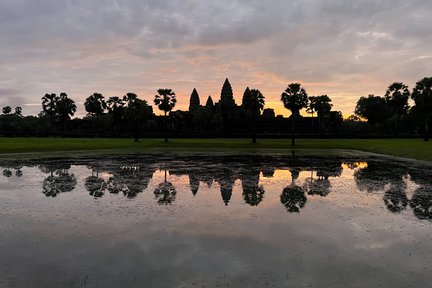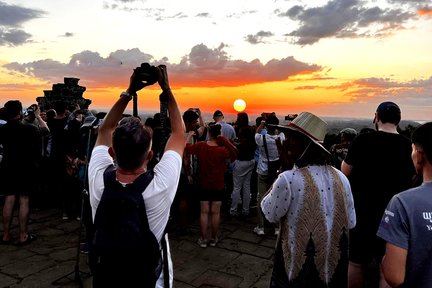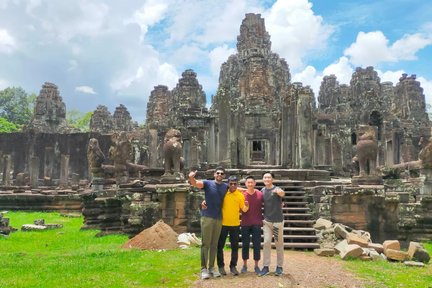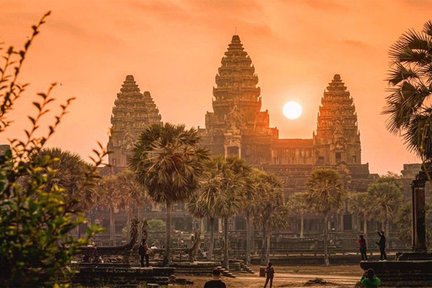Angkor Wat
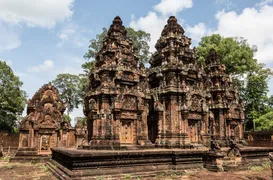
The best of Angkor Wat
Bucket-list experiences
Make it a getaway
Trouble-free transport
More to explore
Why people love Angkor Wat
Nearby places to go
FAQs about Angkor Wat
What is the best time to visit Angkor Wat?
How can I get to Angkor Wat and what are the transportation options?
What should I know before visiting Angkor Wat?
What to know before visiting Angkor Wat
Remarkable Landmarks and Must-Visit Sights
Main Temple Complex
The centerpiece of Angkor Wat, the main temple complex, is a stunning example of Khmer architecture. It features a quincunx of towers, extensive bas-reliefs, and intricate carvings that depict scenes from Hindu mythology.
Bas-Reliefs
Admire the detailed bas-reliefs that adorn the walls of Angkor Wat. These carvings illustrate epic tales from the Ramayana and Mahabharata, as well as historical events and celestial beings.
Moat and Outer Wall
Encircling the temple complex is a vast moat and an outer wall, creating a serene and majestic setting. The moat symbolizes the cosmic ocean surrounding Mount Meru, the mythical home of the gods.
Cultural and Historical Significance
Angkor Wat was built in the early 12th century by King Suryavarman II as a Hindu temple dedicated to Vishnu. It later transformed into a Buddhist temple, reflecting the region's religious evolution. The temple's architecture symbolizes Mount Meru, and its extensive bas-reliefs and devatas showcase the artistic prowess of the Khmer Empire.
UNESCO World Heritage Site
Designated as a UNESCO World Heritage Site in 1992, Angkor Wat is recognized for its cultural and historical importance. It stands as a symbol of Cambodia, even depicted on the national flag.
Restoration Efforts
Over the years, Angkor Wat has undergone significant restoration efforts to preserve its grandeur. International teams from countries like France, India, Japan, and China have contributed to its conservation.
Culture and History
Angkor Wat and its surrounding temples are a testament to the rich cultural and historical heritage of the Khmer Empire. Built between the 9th and 15th centuries, these temples were originally dedicated to Hindu gods before being converted to Buddhist shrines. Today, they stand as a UNESCO World Heritage site, attracting millions of visitors each year.
Local Cuisine
Siem Reap offers a delightful culinary experience with a mix of traditional Khmer dishes and international cuisine. Don't miss trying Amok, a fragrant fish curry steamed in banana leaves, or Lok Lak, a stir-fried beef dish served with a tangy dipping sauce. For a more immersive experience, visit the local markets and street food stalls.
